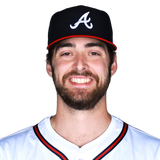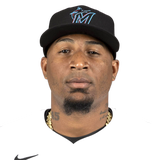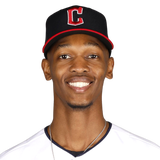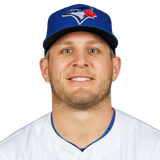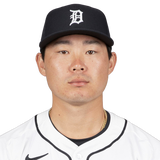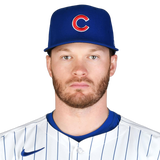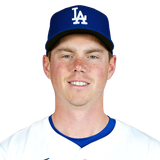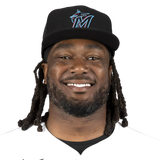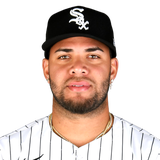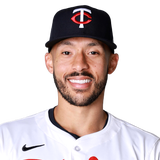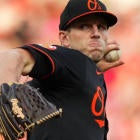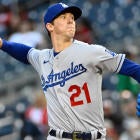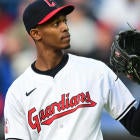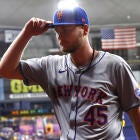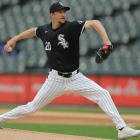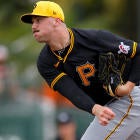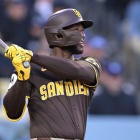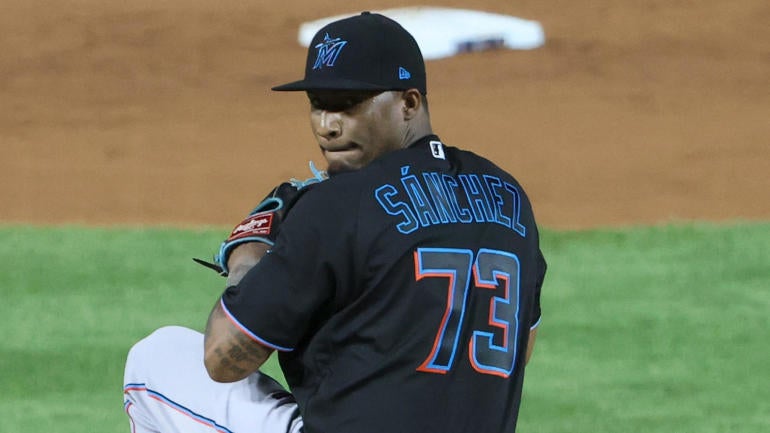
Breakout candidates come in all shapes and sizes, which is what makes identifying them such a fun part of the Fantasy draft prep experience. If you think Aaron Judge is going to stay healthy and match his 2017 production, that's a breakout performance. If you think Jesus Luzardo is going to build on his solid rookie season and emerge as one of the very best pitchers in baseball, that's a breakout, too. And if you think this is the year Nick Senzel climbs from the ranks of the oft-undrafted to become a five-category stud, that's a breakout, too.
Ultimately, it's all about identifying opportunities in your draft where you can create surplus value. If every player on your team plays exactly to their projections, you're probably going to finish somewhere in the middle of the pack in the final rankings. You need sixth-rounders who produce like second-rounders, 12th-rounders who produce like sixth-rounders, and probably a few 20th-rounders to produce like sixth-rounders, too. Especially when it turns out that your second-rounder produced like a sixth-rounder and your sixth-rounder got sent to Triple-A in May.
I like to look for those different-shaped and -sized breakout candidates when I'm putting together my list for every season, and 2021 is no different. I've got three different categories of breakout candidates for you to consider here, beginning with four players who made their MLB debuts in 2020, three established players ready to make that next big leap, and three more who are ready to bounce back from disappointing seasons to help carry your team.
New(-ish) Faces
Here's probably the most exciting type of breakout -- and probably the easiest to get wrong, especially in 2021. The story of the young player who comes up, makes an impact or shows some tantalizing flashes only to be tagged with expectations he can't live up to is a story that is at least as old as Casey at the Bat (published: 1888). It's so easy to dream about what young players can become that we often overshoot, but here are four I'm expecting to live up to those expectations.
Ian Anderson
| ||||||||||
Anderson has been one of the best pitching prospects in baseball for a while, largely on the strength of a terrific fastball/curveball combination, and then he showed up in 2020 with one of the best changeups in baseball. Uh oh. Anderson was absolutely dominant in his big-league debut, striking out 41 batters in 32.1 innings with a 1.95 ERA, and then he went out and threw 18.2 more innings in the playoffs with 24 strikeouts and two earned runs allowed.
He might already be the Braves best pitcher, and he might turn into a Fantasy ace if he can improve his control. He's being drafted relatively early (96.7 ADP) for someone with such a limited track record, but even the 30th starting pitcher off the board may be a conservative valuation. And, as far as young guys go, Anderson has a pretty good track record, having thrown 119.1 innings in 2018 and 135.2 in 2019, meaning 150 innings isn't an unreasonable ask. He's someone worth getting very excited about.
Sixto Sanchez
| ||||||||||
When talking about Sanchez, you have to start with an obvious point: He doesn't get nearly as many strikeouts as you think he should when you watch him pitch. His stuff is electric, with easy upper-90s heat on the fastball and three secondary pitches he's confident enough in that he only threw his fastballs 47.8% of the time. But he simply doesn't miss many bats, with a 20.9% strikeout rate. And that's in keeping with his minor-league track record, when he had a 22.1% strikeout rate in 335.1 innings. That's all pretty disappointing, though Sanchez has always been dominant in spite of it, including a 3.64 ERA and 1.27 ERA in the majors, his first time pitching above Double-A.
Which highlights the first thing I like so much about Sanchez: He's a high-floor pitcher. There are concerns about how many innings he'll throw or whether he'll be able to stay on the mound, but there's very little doubt he'll be very good when he does pitch. He reminds me of Kyle Hendricks, which might not make much sense given that Sanchez throws his fastball roughly 10 mph faster, but the comp works better than you think. Like Hendricks, Sanchez has always had excellent control, and like Hendricks, he's always suppressed results on batted balls better than most pitchers, posting a minuscule 0.24 HR/9 in the minors with a .283 BABIP.
A Hendricks comp won't get your heart racing, but Sanchez obviously has the potential for so much more if he can unlock a way to get more swings and misses out of his arsenal. If he does that without sacrificing his control and ability to suppress results on balls in play, all of a sudden you're looking at a Zack Greinke-esque profile. He could be a top-10 pitcher this time next season.
Triston McKenzie
| ||||||||||
McKenzie was awfully impressive as a rookie, posting a 33.1% strikeout rate to go along with his 3.24 ERA, with a 3.91 FIP that suggested it wasn't a total fluke. But he was even more impressive than you may realize: Prior to his MLB debut on Aug. 22, he hadn't pitched in a game in almost exactly two years. That he made the leap from Double-A to the majors despite missing all of 2019 due to lat and pectoral strains seems like a pretty good marker of his talent.
McKenzie had some issues with home runs and never threw more than 92 pitches in a start, but given the circumstances, that was a promising beginning. There have always been concerns about how his rail-thin frame would ultimately hold up, and the velocity dip he saw in his last few September outings won't make those concerns go away. Still, McKenzie seems locked into a rotation spot to open the season, has obvious talent, and an organization with a sterling track record for getting the most out of their pitchers, which makes this a perfect opportunity to buy in on a guy who has less hype (ADP of 187.0) around him this winter than you'd expect.
Daulton Varsho
| ||||||||||||
When you're building a Roto team that needs to compete in 10 different categories, finding production in unexpected places can be something like a cheat code. Isiah Kiner-Falefa is a good example of this from 2020: Playing third base everyday for the Rangers but eligible at catcher for Fantasy, he ranked eighth at the position and his eight stolen bases really stood out at a position where nobody else had more than four. If you're looking for the guy who could have that kind of impact in 2021, Varsho is your guy.
Eligible at catcher -- and likely to play at least sometimes there -- Varsho figures to get the bulk of his playing time in center field, possibly earning an everyday job there. What that does is gives Varsho a possible playing time edge over nearly everyone else at the position -- Kiner-Falefa played 58 of 60 games in 2020 -- and his ability to steal bases gives him a high floor at catcher. However, he's not just listed as a breakout because he's some statistical curio. Varsho is a legitimate prospect, ranking as Baseball America's No. 53 before 2020, when he exhausted his rookie eligibility due to service time. He hit .301/.378/.520 in 108 games as a 22-year-old at Double-A, with 18 homers and 21 steals, to give a sense of the kind of potential he offers.
If Varsho can establish himself after getting his feet wet in 2020, he could be a top-five option at catcher. If not much more. If I was going to reach for a catcher, Varsho in the 12th round range is one of three I would do so for.
Star Turns
Here's your more typical definitions for "breakouts." These are established players, being drafted well within the range of Fantasy relevance, who I can see taking a big step forward in value. None are sure things, but if you're looking for the kind of high-upside players who can put you ahead of the competition, sliding one of these guys up one round from their ADP is a good idea.
Keston Hiura
| ||||||||||||
Hiura was a breakout pick for me in 2020, and it definitely didn't go as planned, as he led the NL in strikeouts and hit just .212 in a pretty frustrating second season. The swing-and-miss issues in his game that he was able to overcome as a rookie overcame him, as he posted the lowest contact rate on pitches inside the strike zone of any player in baseball. It's not what you want, and yet I can't help but buy in again. This was never an issue for him in the minors -- Hiura was lauded for his advanced hit tool as a prospect -- and I can't help but bet on improvement there.
The Brewers hitters as a collective struggled in 2020, with some citing the unusual run-up to the season and lack of access to the video room as explanations. While granting that we're always more likely to buy an explanation like that when it fits with our preconceived notions, it does seem to offer some explanation for why Hiura was so much worse in year two. I still love the swing and the power he can generate with it, and Hiura is still hitting .266 with 32 homers and 12 steals in 143 major-league games, which is probably a more true accounting of who he is than his struggles in the strange 2020 season or his incredible 2019.
Ultimately, it comes down to having faith in a guy I think is an elite talent, and betting that he'll be able to figure it out and turn into one of the better power-speed options in the game -- and those steals could prove extra valuable when he gains first base eligibility early in the season.
Ian Happ
| ||||||||||||
One thing Happ has always done is hit the ball with authority. In his first two seasons in the majors, he ranked among the very best in the league in terms of expected outcomes on balls in play based on Statcast data, but he simply didn't make enough contact to get the most out of his skill set consistently. Those issues earned him a trip back to the minors, but since returning, he's hitting .260/.350/.530 in 115 games, with a 33-homer pace over 162 games that is even more impressive when you realize more than half his appearances in 2019 came as a sub. He has 20 homers in 81 starts in that span.
That's not to say Happ will be a 40-homer guy, but he ranked in the 84th percentile in average exit velocity, 89th in hard-hit rate, and 71st in expected slugging percentage, so there's clearly plus power here, and he's cut his strikeout rate to the 25-27% range since returning from the minors, a much more acceptable range. Happ figures to bat leadoff plenty for the Cubs, and it would be hard for that offense to not be better than it was a year ago, which should lead to plenty of runs and counting stats. A season where he hits .265 with 30-plus homers, scores 100-plus runs and drives in 80 is entirely realistic, and that's not much different than what we're expecting from someone like Michael Conforto nearly 75 picks earlier in ADP. And, for the record, I like Conforto at that cost. That tells you how much I like Happ.
Will Smith
| ||||||||||||
I mentioned in the Varsho section that there are three catchers worth reaching ahead of their ADP for, and Smith is one of the others, along with J.T. Realmuto. He's currently the No. 3 catcher coming off the board in ADP, but nearly two rounds behind Salvador Perez, who is being priced in a way that makes him an almost sure thing to be included in my eventual "Busts" list. Smith probably won't be among the leaders at the position in games played, given how the Dodgers like to prioritize rest, but there's a decent chance he's just flat-out the best hitter at the position.
We're dealing with a small sample size here even after two seasons in the majors, but Smith is hitting .268/.363/.574 in 91 major-league games, and he showed real signs of improvement in 2020, brief though it was. Smith's biggest flaw as a rookie was an elevated 26.5% strikeout rate, but he cut that to 16.1% in 2020 thanks to a more selective approach that led to a big increase in walk rate and looked a lot more like who he was in the minors. However, it wasn't just that Smith stopped swinging; he also started making a lot more contact. His 85.0% contact rate was 8.3 points better than 2019's and would have ranked 10th in baseball if he had enough at-bats to qualify, tied with Jose Ramirez.
If Smith retains those gains, there probably wouldn't be any question about whether he is the best hitting catcher in the league. I'm not saying I think that is or should be his new baseline, but if we're going to overreact and reach for a catcher who showed marked improvement in 2020, Smith makes a lot more sense than someone like Perez does.
Bounce-back Breakouts
Bounce-back candidates are some of my favorite picks every year. Sometimes, a down season is a sign that a player has lost it, but when we're talking about a player in his prime, there is almost always value in buying into a return to form. And, when that down season comes in the weirdest season in major-league history and we're talking about 60-game (or smaller) sample sizes, buying a dip in price makes even more sense. Here's who I'm buying.
Josh Bell
| ||||||||||||
You can certainly argue I am perhaps too high on Bell, seeing as I have him four-to-five rounds higher in my overall rankings than his ADP, not much below where he was being drafted a year ago. However, it's worth remembering that his performance in 2019 was a lot better than his 2020 draft price indicated -- he hit .277 with 94 runs, 37 homers, and 116 RBI. Chalk one up for the skeptics, I guess, but there are still reasons to buy into Bell, who held on to many of the batted-ball improvements from his 2019 campaign. One place he didn't was with his launch angle, which tumbled to a career-low 5.9 degrees from 2019's 13.1 degrees.
That was a big part of Bell's breakout, so it will be key for him to get back to that point, and he has spent the offseason working with the same hitting coach who helped him prior to his 2019 breakout -- and the Nationals say they've identified a few things he can fix to get back to 2019. That kind of talk isn't rare in the offseason -- every hitter has a hitting guru who will fix all that ails them -- but in Bell's case, we have a history of it actually working. When you can get a bat with the kind of potential Bell's has in the 15th round or later, it's well worth taking the plunge.
Yoan Moncada
| ||||||||||||
Like Bell, Moncada only really has the 2019 season in his MLB track record to represent elite production, but he actually has a more compelling explanation for his struggles in 2020 than most. Moncada dealt with a case of COVID-19 before the season and admitted he never felt fully healthy until well into the offseason. Fatigue and weakness are often associated with COVID cases, and the nature of baseball's schedule makes it especially tough to deal with the daily grind.
Moncada talked about the "daily battle to find that strength," and you can see that in how he played: Moncada didn't attempt a single steal, and after increasing his swing rate from 41.1% to 47.3% in 2019, he fell back down to 42.7%. Meanwhile, his average exit velocity fell sharply, from 93.1 mph to 87.8. Moncada has never been lacking for physical tools, but in 2019, he adjusted his approach, adopting a more aggressive plan at the plate that allowed those elite physical tools to manifest in games. If you were inclined to be skeptical of Moncada's breakout, you get the evidence you wanted from 2020. However, writing it off as a fluke because of the lingering effects of an illness feels unfair, especially when those effects seemed to directly target the things that helped fuel the breakout in the first place.
Carlos Correa
| ||||||||||||
The story on Correa has always been pretty consistent: If he could just stay healthy, he'd be a star. Well, he stayed healthy in 2020 and was anything but, hitting .264/.326/.383 despite missing just two games. The injury concerns didn't just go away because he stayed healthy for two months, but now Correa doesn't look like quite as much of a sure thing to produce.
Of course, for as much as he struggled in those two months, October also happened, and Correa was dominant in 13 postseason games, hitting six homers and driving in 17 runs. Something clicked for Correa, and whatever it was, it was a welcome sign. Correa now has an OPS below .730 in two of the last three seasons, but 2018 saw him dealing with a series of nagging injuries even when he was on the field while 2020 was a small sample struggle that he eventually pulled out of. In between those two seasons was a .279/.358/.568 line, reminiscent of Correa's 2017 production, too. So many Fantasy players are out on Correa for how often he has disappointed us, but his 127.1 ADP represents a real buying opportunity because he's being penalized for both his pre-2020 injury history and his 2020 struggles.
When Correa is right, he's right there with Xander Bogaerts and Corey Seager in that second tier of shortstops. And if you remember, Seager was coming off a disappointing year with a long history of injuries and was going off the board in a similar range to where Correa is now. We know how well that worked out in 2020, and Correa feels poised to be 2021's version.
So which 2021 Fantasy baseball sleepers should you snatch in your draft? And which undervalued first baseman can help you win a championship? Visit SportsLine now to get Fantasy baseball rankings for every single position, all from the model that called Will Smith's huge breakout last season, and find out.








